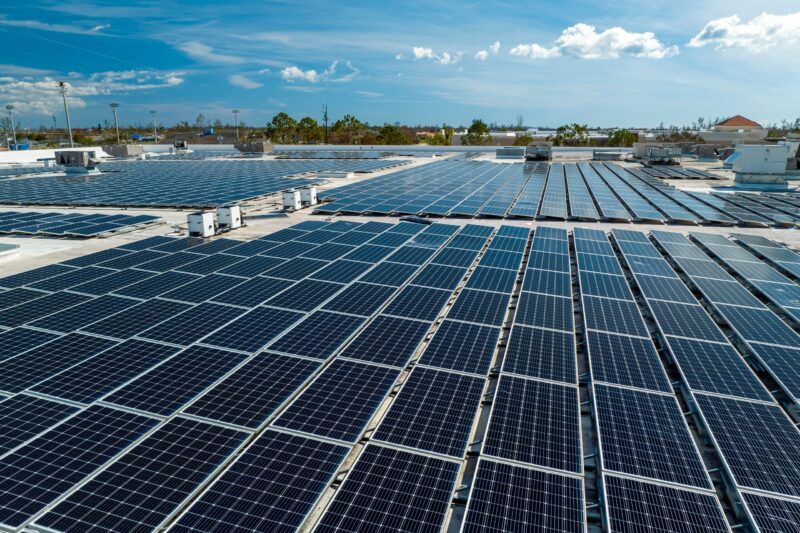
This site
is mobile
responsive

The earth is warming faster than at any point in recorded history, drastically altering the earth’s climate into extreme weathers and massive natural disasters. Solar energy emerges as a crucial solution to reduce greenhouse gas emissions by displacing fossil fuel energy. It is projected that solar energy could cut global CO2 emissions by over 4 billion tons annually by 20501.
The implementation of the Carbon Border Adjustment Mechanism (CBAM) from October 2023 further underscores the global shift towards sustainable practices, compelling companies worldwide to adopt green technologies and carbon pricing policies.
The global solar energy sector continues its robust growth trajectory, poised as the fastest-growing renewable energy (RE) source. Declining costs, technological advancements, and supportive government policies worldwide are driving this expansion.
According to the International Energy Agency (IEA), solar energy capacity additions have consistently increased is expanding rapidly, with over 150 GW of solar capacity added in 2020 alone, and projections suggest this could rise to over 200 GW annually by 2025. This growth is attributed to both spans of large-scale solar farms and distributed solar project installations, including residential and commercial rooftop installations. Corporations and investors increasingly view solar energy as a strategic investment aligned with the environmental, social, and governance (ESG) criteria and Sustainable Development Goals (SDGs).
Declining Costs: Over the past decade, the cost of solar energy has dramatically decreased. The Levelized Cost of Energy (LCOE) for utility-scale solar energy has dropped by more than 80%, making it one of the most affordable sources of electricity. In 2020, the global weighted average LCOE of utility-scale solar energy was $0.068 per kWh, down significantly from $0.378 per kWh in 2010. This huge cost reduction is driven by economies of scale, improvements in manufacturing processes, and ongoing technological advancements in solar cell efficiency.
Technological Advancements: Innovations in solar technology are continuously enhancing the performance and affordability of solar energy systems. Advances include the development of abound in high-efficiency solar cells, such as perovskite and tandem cells, which promise greater energy conversion efficiency. Additionally, bifacial solar panels, which capture sunlight on both sides and advanced sun-trajectory tracking systems that follow the sun’s path, significantly increase energy yield continue to enhance solar efficiency and affordability.

Energy Storage Integration: To mitigate the intermittent nature of solar power, integrating energy storage systems is becoming increasingly important. Battery Energy Storage Systems (BESS) are crucial for storing excess solar energy during peak production times and discharging it during periods of low sunlight. Innovations in lithium-ion batteries and the emergence of solid-state batteries are enhancing storage capacities, reducing costs, and extending the lifespan of storage solutions which are crucial in addressing solar generation intermittency, integrating energy storage systems like Battery Energy Storage Systems (BESS).
Government Policies and Incentives: Government policies play a pivotal role in the adoption and expansion of solar energy. Many countries have implemented supportive policies, such as starting with feed-in tariffs (FIT) then large-scale solar (LSS), tax incentives, and RE targets, to encourage the development of solar projects. International agreements, such as the Paris Agreement, also drive national commitments to increase renewable energy capacity and reduce greenhouse gas emissions.
The solar energy sector also brings significant economic benefits, notably in job creation. In 2022, the International Renewable Energy Agency (IRENA) reported 4.9 million jobs in the solar photovoltaic (PV) industry, making it the fastest-growing sector among RE technologies. Importantly, 40% of these jobs are held by women, underscoring the industry’s role in promoting economic empowerment.

Southeast Asia, guided by the ASEAN Plan for a Low-Carbon Future targeting a 23% increase in RE capacity by 2025, is experiencing a surge in solar adoption. Countries like Thailand, Vietnam, the Philippines, and Singapore are at the forefront. Thailand’s Alternative Energy Development Plan (AEDP) aims for 30% RE by 2037, with solar playing a pivotal role. Vietnam, leveraging its abundant sunlight and favourable policies, targets an impressive 12GW of solar capacity by 2030. The Philippines is actively expanding its solar potential through government initiatives and private sector participation. Even land-scarce Singapore boasts the region’s largest Energy Storage System for efficient solar integration and explores innovative approaches like regional power grids and green hydrogen.

Malaysia’s solar industry is a rapidly growing sector. Located near the equator, Malaysia enjoys consistent solar radiance, making it ideal for solar energy projects. The National Energy Transition Roadmap (NETR) aimed for net-zero emissions by 2050 sets a comprehensive plan and ambitious goals for reshaping Malaysia’s energy landscape. Programmes like the Net Energy Metering (NEM) scheme and Large-Scale Solar (LSS) initiatives provide incentives for residential and commercial solar generations, accelerating development.
MIDA has been at the forefront of promoting green technology investments by introducing targeted incentives through Budget 2024, designed to empower investors towards global leadership in energy and carbon efficiency standards, aiming for net-zero goals. In 2023, MIDA approved 565 green technology projects worth RM3.2 billion, with 94% being solar projects.
The Solar Synergistics Conference 2024, co-organised by MIDA and LONGi, marked a significant event in Kuala Lumpur. Coinciding with the 50th anniversary of Malaysia-China relations, the conference brought together over 200 participants, including key stakeholders from the Energy Commission, Sustainable Energy Development Authority (SEDA), Tenaga Nasional Berhad (TNB), and financial institutions, to discuss advancing Malaysia’s solar ecosystem.
Recent initiatives that highlight Malaysia’s energy transition progress:
Future RE programmes are set to accelerate the development of solar projects in Malaysia, aligning with the country’s energy transition goals. Companies investing in Malaysia’s solar sector can benefit from Southeast Asia’s expanding renewable energy market, accessing a reliable and cost-effective source of green energy. The government’s supportive framework, including tax incentives, enhances these opportunities. By investing in Malaysia’s solar industry, businesses can play a direct role in promoting sustainable growth and fostering a cleaner future for future generations. MIDA is ready to partner with forward-thinking companies to harness the potential of Malaysia’s solar energy sector, fostering a cleaner and more sustainable future.
To learn more, please contact the Green Technology Division, MIDA at https://www.mida.gov.my/staffdirectory/green-technology-division/.
1 Solar Energy and Climate Change Mitigation,” Intergovernmental Panel on Climate Change (IPCC), 2018.
3 https://www.tnb.com.my/assets/press_releases/2024022206_ENG.pdf